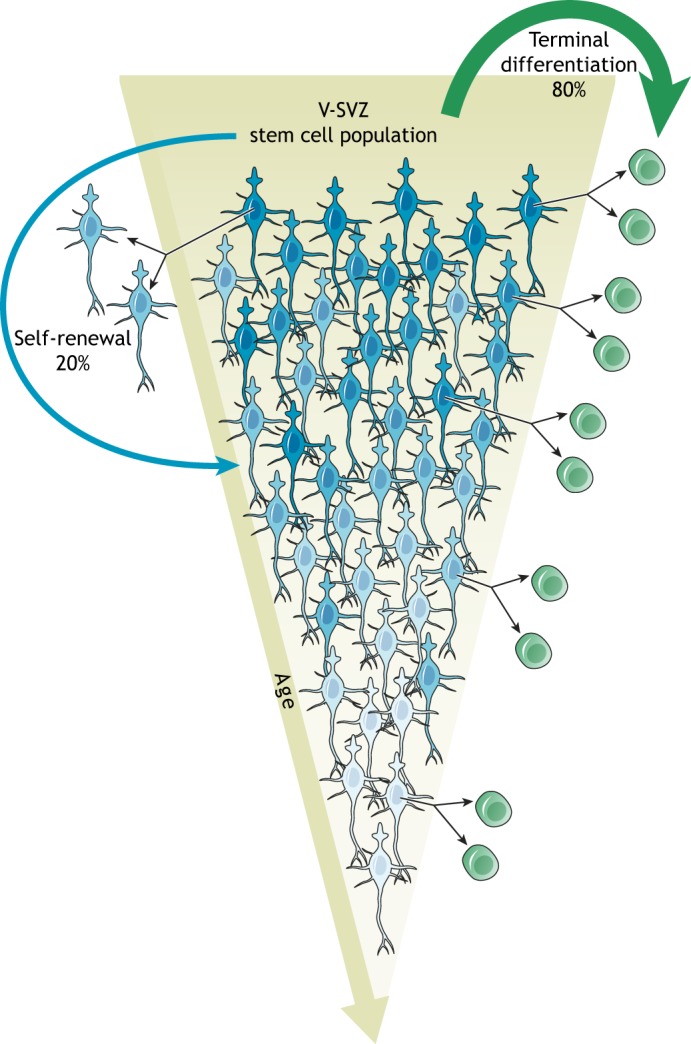Fig. 5.

B1 cells decline over time. B1 cells (blue) divide symmetrically. The majority (∼80%) of B1 cells becomes consumed by the generation of C cells (green), leading to a declining B1 cell population as the animal ages (terminal differentiation; green arrow). A smaller fraction (∼20%) of B1 cells symmetrically self-renews, which generates two B1 cells. Given the high level of terminal differentiation, this process allows neurogenesis to be maintained throughout the lifespan of the animal (albeit at lower levels). Note that B1 cells can undergo more than one round of symmetric self-renewal, enter extended periods of quiescence, and generate progeny at different times. In addition, each self-renewing division may lead to intrinsic changes in B1 cells (aging of the stem cell lineage), here illustrated by different shades of blue.
